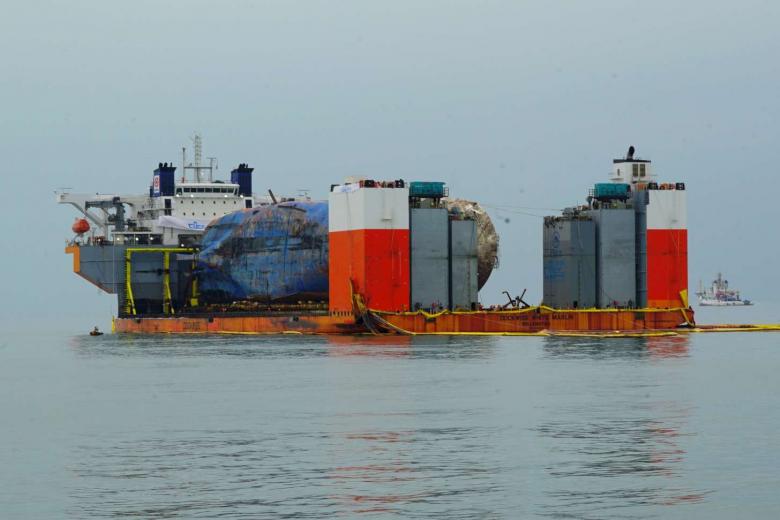JINDO (AFP) - When South Korea's Sewol ferry sank three years ago killing more than 300 people, it also devastated businesses close to the wreck site. Now owners hope its salvage will herald a change in their fortunes.
The ship went down in an archipelago off south-western South Korea, whose 1,700 islands make up the Dadohaehaesang national park, the country's largest.
Rocky outcrops dot the waters, while bigger ones offer beautiful beaches, hiking trails, and accommodation with scenic ocean views, along with temples and seasonal festivals.
At a harbour on the southern side of Jindo, the closest large island to the wreck, motorboats used to be chartered for marine trips by fishermen and tourists.
Now they lie tied to the dock and their owners sit idle nearby. Business was down by half, said captain Park Tae Il, as anglers - his main clients - avoided the area.
"Fishermen call it the devil's water," he said. "The atmosphere is cold because so many young lives were lost."
The sinking is one of South Korea's worst-ever maritime accidents, and almost all the victims were schoolchildren.
It was hugely controversial and investigations concluded it was largely man-made - the cumulative result of an illegal redesign, an overloaded cargo bay, inexperienced crew and a questionable relationship between the ship operators and state regulators.
Now more visitors than ever before come to Jindo, said local official Choi Min Woo - over 100 every weekend.
But instead of staying in the area, they pay their respects to the dead at a shrine in Paengmok, placing white chrysanthemums before a wall covered in pictures of dead children, and leave.
"They are on their way to another tourist location," said Mr Choi.
That has crippled tourist businesses.
Ms Lim Jung Sook opened a guesthouse on the island, just a year before the accident.
In her first 12 months in business, she charged US$300 (S$420) a night for a two-bedroom cabin in peak season, and all her rooms were full, she said.
But business plunged after the disaster, and even a 50 per cent price cut failed to attract customers.
"Even my friends refuse to come, saying they are not comfortable vacationing wearing sunglasses and straw hats in such (a) subdued atmosphere," Ms Lim told AFP.
On the way into Paengmok, a signboard stands in the middle of an empty gravel lot, describing an elaborate plan to turn the site into a cultural complex with accommodation, shopping centres and leisure facilities from December 2014 to December 2017.
The proposal is part of a multi-million-dollar tourism development project for Jindo county, but instead the families of missing ferry victims have been camped out at the spot, waiting to recover their dead children.
"The plan has been delayed," said local official Choi, who is in charge of the scheme, citing the accident as one of the factors.
Now completion is expected in three to four years, by when he hopes Jindo will have been able to recover from its image as the "devil's island".
Business owners hope that last week's successful raising of the wreck will herald a revival for their enterprises.
Freshly caught seafood was once one of the area's attractions, but demand was destroyed by the disaster.
Businesses ceased operations, said fried chicken vendor Lee Myung Seok.
"No one bought seafood from Jindo waters because of the belief that they fed on human flesh," he said.
"My heart still aches when I pass by the harbour," Lee said, letting out a long sigh of grief.

